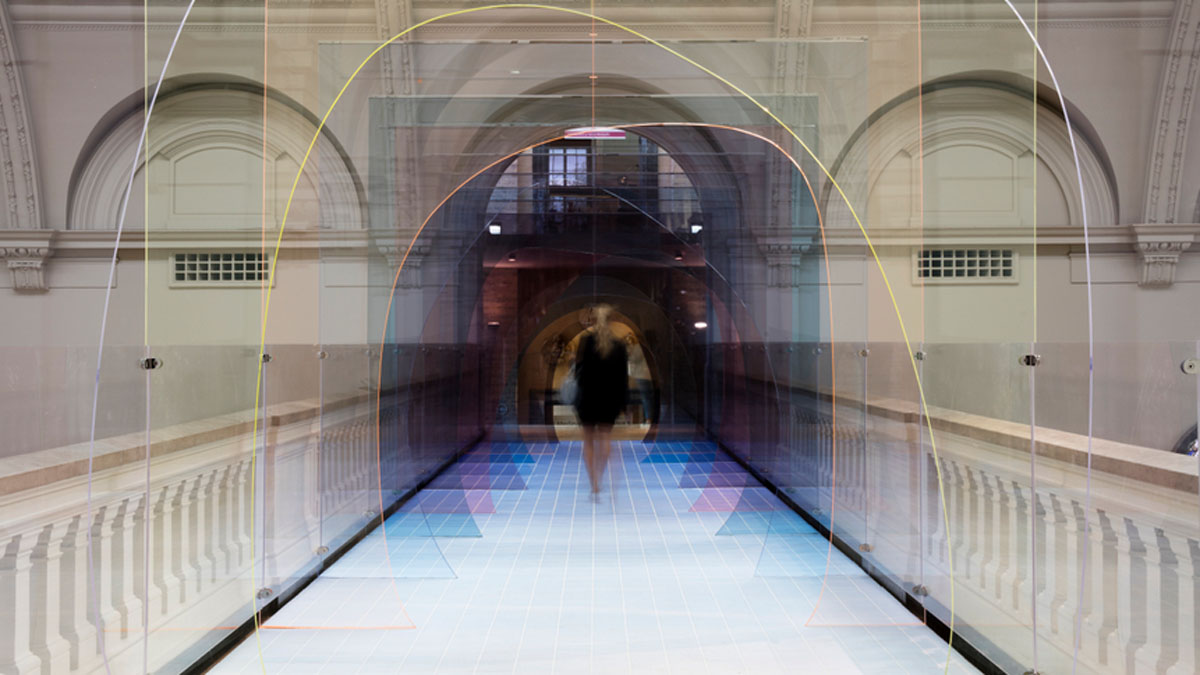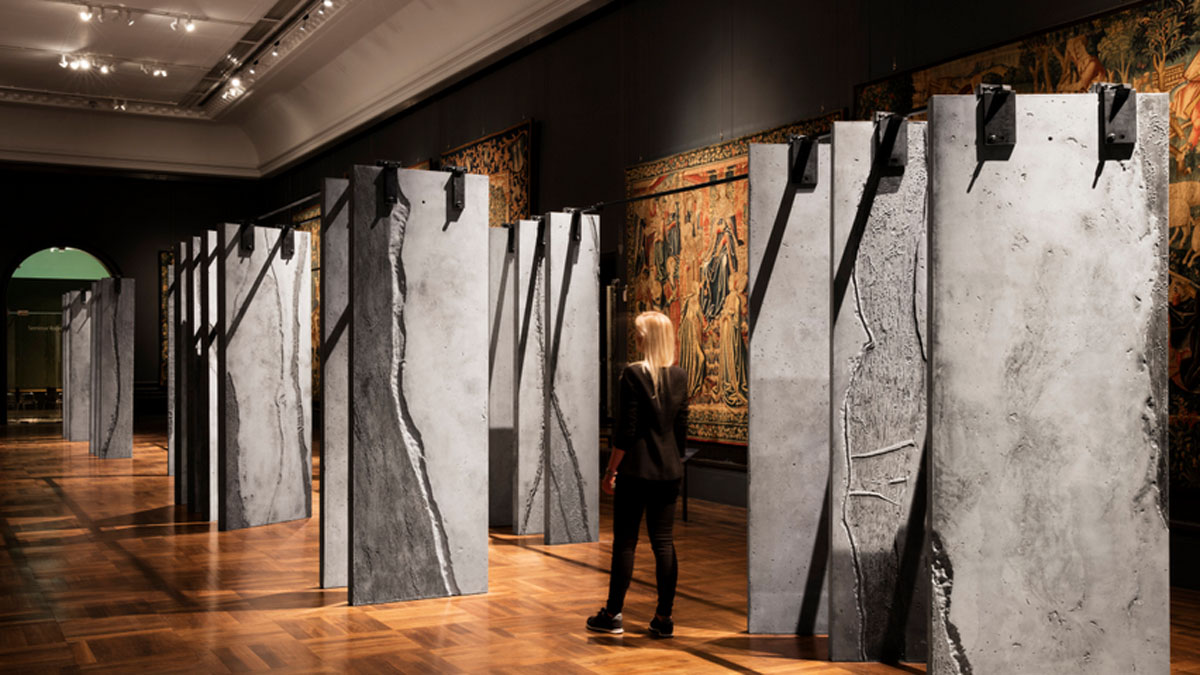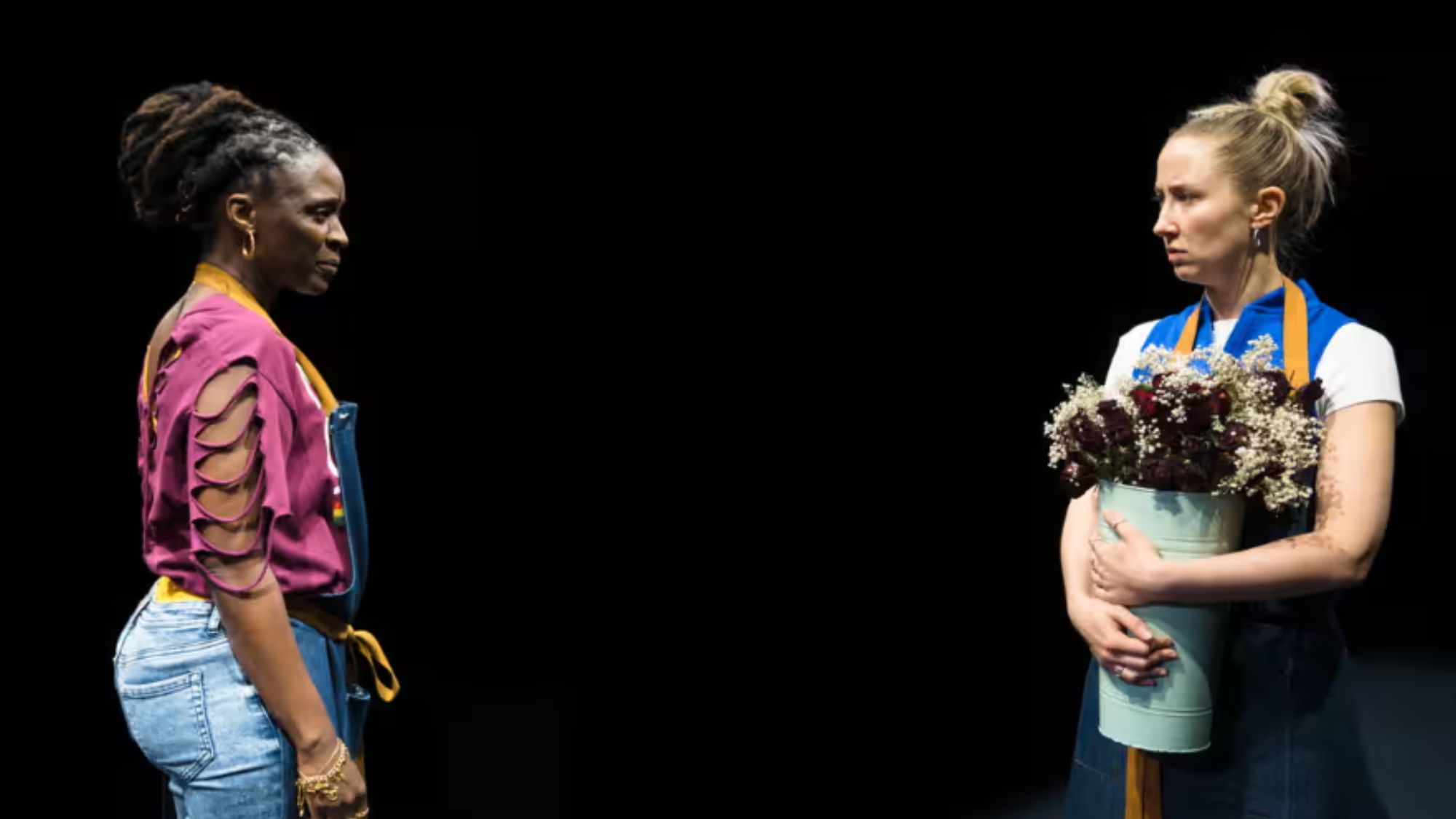LDF at the V&A: from fluttering insects to kebab shops and crystals
A 'treasure trail' of design comes to the Victoria and Albert Museum for London Design Festival






The London Design Festival has spawned hundreds of installations across the capital this year, with the main hub at the Victoria and Albert Museum. Several installations are dotted around the V&A in what is being hailed as a "treasure trail" of design.
At the Grand Entrance, visitors are greeted by an arresting 18m-high pillar embedded with more than 600 Swarovski crystals, designed by Norwegian designer Kim Thomé. Entitled Zotem (a mix of 'totem' and 'zoetrope'), the monolith rises up to one of the galleries on the sixth level, making it the most conspicuous of the new LDF installations.
Harder to find are the ten garments specially created by designer Faye Toogood to mimic some of the museum's long-term collections: a marble coat stands camouflaged on the marble staircase, while other "suits of armour" are created from materials such as bronze, wood and metal to reflect their surroundings. Visitors to The Cloakroom in the Clore Study Area are invited to wear one of Toogood's 150 foam-textile coats, complete with a large map in place of a label to help them discover all ten couture pieces.
The Week
Escape your echo chamber. Get the facts behind the news, plus analysis from multiple perspectives.

Sign up for The Week's Free Newsletters
From our morning news briefing to a weekly Good News Newsletter, get the best of The Week delivered directly to your inbox.
From our morning news briefing to a weekly Good News Newsletter, get the best of The Week delivered directly to your inbox.
Elsewhere in the museum is Curiosity Cloud, an unusual interactive installation residing in the darkened Norfolk House Music Room, which contains the ornate gold and cream panelling from the former St James's Square residence of the Dukes of Norfolk.
Designed by the Austrian duo mischer'traxler, in collaboration with champagne house Perrier-Jouët, Curiosity Cloud comprises 250 mouth-blown glass globes, each containing a single handmade insect attached to a wire.
As visitors approach the installation, the globes light up and the insects begin to flutter and collide with the glass. Designer Katharina Mischer describes it as a "playful experience" that points to "mankind's relationship to nature".
Downstairs, in amongst the large-scale Renaissance relics and marble statues of room 50a, is an imposing installation that tells the story of consumerism in 21st-century London.
A free daily email with the biggest news stories of the day – and the best features from TheWeek.com
The Tower of Babel, by artist Barnaby Barford, is a 6m-high tower of 3,000 bone china shops, each unique and representing a real building in the capital. Barford cycled more than 1,000 miles across every postcode in the city taking the photographs, with the biblical name alluding to people's efforts to find fulfilment through shopping.
Each miniature shop is for sale, with prices ranging from £95 for the derelict stores and kebab houses, positioned at the bottom of the tower, up to £6,000 for replicas of iconic buildings such as Christie's and Sotheby's, which sit so high up the Tower of Babel that visitors need binoculars to inspect them.
London Design Festival 2015 runs until 27 September.
-
 How robust is the rule of law in the US?
How robust is the rule of law in the US?In the Spotlight John Roberts says the Constitution is ‘unshaken,’ but tensions loom at the Supreme Court
-
 Magazine solutions - December 26-January 2
Magazine solutions - December 26-January 2Puzzles and Quizzes Issue - December 26-January 2
-
 Venezuela ‘turning over’ oil to US, Trump says
Venezuela ‘turning over’ oil to US, Trump saysSpeed Read This comes less than a week after Trump captured the country’s president
-
 Friendship: 'bromance' comedy starring Paul Rudd and Tim Robinson
Friendship: 'bromance' comedy starring Paul Rudd and Tim RobinsonThe Week Recommends 'Lampooning and embracing' middle-aged male loneliness, this film is 'enjoyable and funny'
-
 The UK's best exhibitions and shows to visit in 2025
The UK's best exhibitions and shows to visit in 2025The Week Recommends These are the most exciting events in the cultural calendar
-
 The Count of Monte Cristo review: 'indecently spectacular' adaptation
The Count of Monte Cristo review: 'indecently spectacular' adaptationThe Week Recommends Dumas's classic 19th-century novel is once again given new life in this 'fast-moving' film
-
 Death of England: Closing Time review – 'bold, brash reflection on racism'
Death of England: Closing Time review – 'bold, brash reflection on racism'The Week Recommends The final part of this trilogy deftly explores rising political tensions across the country
-
 Sing Sing review: prison drama bursts with 'charm, energy and optimism'
Sing Sing review: prison drama bursts with 'charm, energy and optimism'The Week Recommends Colman Domingo plays a real-life prisoner in a performance likely to be an Oscars shoo-in
-
 Kaos review: comic retelling of Greek mythology starring Jeff Goldblum
Kaos review: comic retelling of Greek mythology starring Jeff GoldblumThe Week Recommends The new series captures audiences as it 'never takes itself too seriously'
-
 Blink Twice review: a 'stylish and savage' black comedy thriller
Blink Twice review: a 'stylish and savage' black comedy thrillerThe Week Recommends Channing Tatum and Naomi Ackie stun in this film on the hedonistic rich directed by Zoë Kravitz
-
 Shifters review: 'beautiful' new romantic comedy offers 'bittersweet tenderness'
Shifters review: 'beautiful' new romantic comedy offers 'bittersweet tenderness'The Week Recommends The 'inventive, emotionally astute writing' leaves audiences gripped throughout